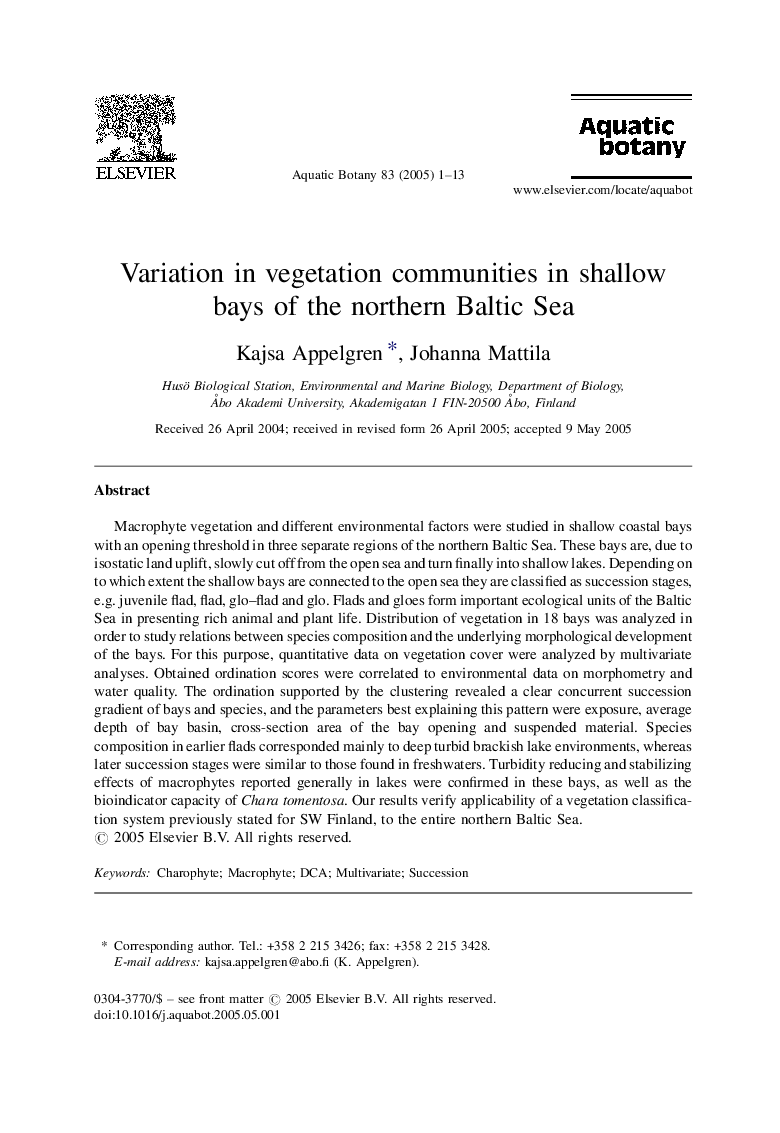| Article ID | Journal | Published Year | Pages | File Type |
|---|---|---|---|---|
| 9477577 | Aquatic Botany | 2005 | 13 Pages |
Abstract
Macrophyte vegetation and different environmental factors were studied in shallow coastal bays with an opening threshold in three separate regions of the northern Baltic Sea. These bays are, due to isostatic land uplift, slowly cut off from the open sea and turn finally into shallow lakes. Depending on to which extent the shallow bays are connected to the open sea they are classified as succession stages, e.g. juvenile flad, flad, glo-flad and glo. Flads and gloes form important ecological units of the Baltic Sea in presenting rich animal and plant life. Distribution of vegetation in 18 bays was analyzed in order to study relations between species composition and the underlying morphological development of the bays. For this purpose, quantitative data on vegetation cover were analyzed by multivariate analyses. Obtained ordination scores were correlated to environmental data on morphometry and water quality. The ordination supported by the clustering revealed a clear concurrent succession gradient of bays and species, and the parameters best explaining this pattern were exposure, average depth of bay basin, cross-section area of the bay opening and suspended material. Species composition in earlier flads corresponded mainly to deep turbid brackish lake environments, whereas later succession stages were similar to those found in freshwaters. Turbidity reducing and stabilizing effects of macrophytes reported generally in lakes were confirmed in these bays, as well as the bioindicator capacity of Chara tomentosa. Our results verify applicability of a vegetation classification system previously stated for SW Finland, to the entire northern Baltic Sea.
Related Topics
Life Sciences
Agricultural and Biological Sciences
Aquatic Science
Authors
Kajsa Appelgren, Johanna Mattila,
